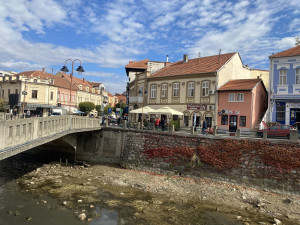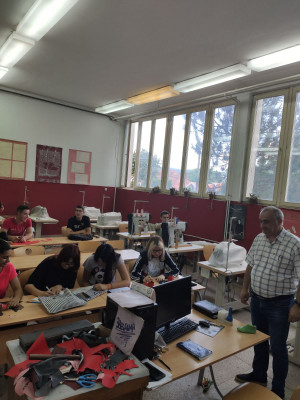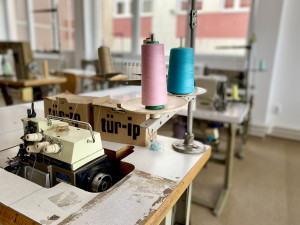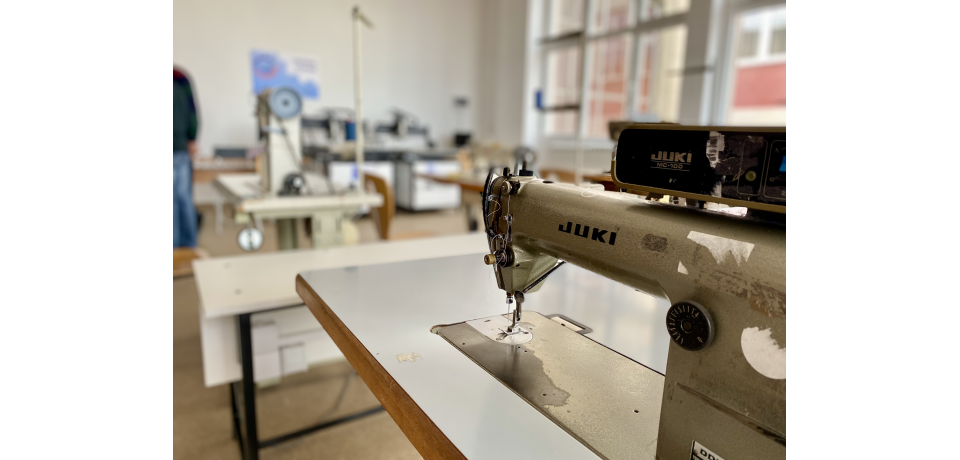Employment Training Courses for Young People Support Local Economic Prosperity in Knjaževac, Serbia
Objetivos de Desarrollo Sostenible Relacionados y Objetivos del Pacto Mundial sobre Migración
The small city in Southern Serbia, Knjaževac, is beautiful, safe and friendly. But it faces a challenge: depopulation and slowing development, because young people are moving from rural areas to bigger cities or are leaving the country entirely. Some of the villages on the outskirts of town or in the remote mountain villages have become ghost towns, while others only have one or two elderly residents. In the main city, young people are looking for reasons to stay.

Many young adults are already taking courses in the local technical college to prepare them for their future jobs, but they did not have pre-existing courses in some of the most in-demand skills right now: tailoring (including leather tailoring for the local shoe making industry and textile tailoring for clothing or material products like souvenirs) and machine operation skills needed in nearby factories (like furniture making). This mismatch between local educational opportunities and the skills that businesses need in future employees has been a challenge for some time.

Aimed at supporting local youth with more employment opportunities and choices, the project Support Local Development through New Services for Unemployed Youth provides free vocational training for local unemployed young people. The training programme includes CNC (machines that are used during specific parts of the factory production process) operation courses and tailoring courses. This project better meets the demands of the local industries, and is implemented by the Local Self-Government of Knjaževac in cooperation with the Timok Club, the local Technical School, and in coordination with the National Employment Service and Center for Social Work, and with support from IOM and UNDP with financial support from SDC. It is an example of how whole-of-community partnerships between local governments, companies, training schools and international organizations can make a difference.
“I am satisfied with program because it gives me the opportunity to find a job. I would invite young people to apply for the training program”, says one participant in the project.
The courses are open to everyone from around 16-30 years old, including women and the Roma community. The training is facilitated through 2-month programs with theoretical and practical teaching, after which students receive a certificate which enables them to work either in the textile industry or to be employed as machine operator assistants. The programme is coordinated with local businesses, streamlining the students’ path to employment after receiving their diploma upon completing the programme, and ensuring that the acquired technical skills match the demands of the labour market.

Projects like this one aim to provide opportunities to young people in their hometowns, so that migration is no longer their only path forward but is instead a choice. By addressing SDG 1 (no poverty), SDG 4 (quality education) and SDG 8 (decent work), the hope is that more people will remain in Knjaževac and continue to see its economy and social bonds thrive. The project better links local educational opportunities and skills development to the needs of local employers, aligning the supply and demand sides of the local labour market and boosting the local economy more broadly.

This initiative exemplifies how the linkages between migration and sustainable development are interlinked and complex. We typically think of migration governance as only pertaining to migration or asylum policies, but it also includes addressing the complex underlying factors that may drive someone to leave a community. Initiatives like the one in Knjaževac show what it means to truly “leave no one behind” and instead ensure every person is able to achieve their full potential.
This project is one of three local municipal initiatives ongoing in Serbia as part of the Global IOM-UNDP Joint Programme on Making Migration Work for Sustainable Development, which works in 11 different countries. Learn more about the project here.
